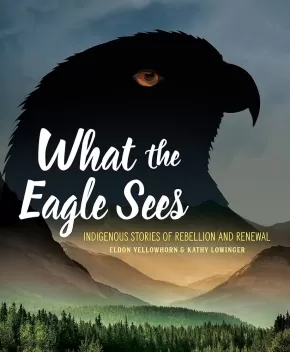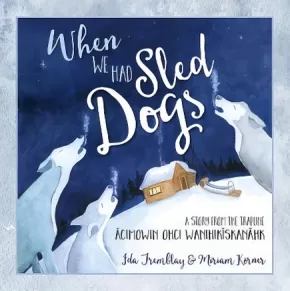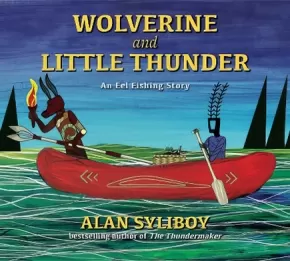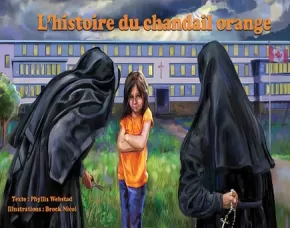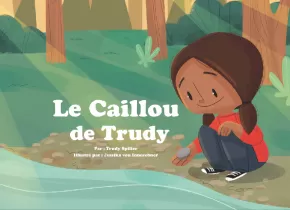
Canadian Indigenous Books for Schools K-7 2020-2021
46
-
51
of
51 Results;
Sort By
Go To
of 4
This list of Indigenous titles was published by The Association of Book Publishers of British Columbia (ABPBC) in 2020-2021.
What the Eagle Sees: Indigenous Stories of Rebellion and Renewal (PB)
$16.95
Format:
Paperback
Text Content Territories:
Indigenous;
ISBN / Barcode: 9781773213286
Synopsis:
Synopsis:
"There is no death. Only a change of worlds.” —Chief Seattle [Seatlh], Suquamish Chief
What do people do when their civilization is invaded? Indigenous people have been faced with disease, war, broken promises, and forced assimilation. Despite crushing losses and insurmountable challenges, they formed new nations from the remnants of old ones, they adopted new ideas and built on them, they fought back, and they kept their cultures alive.
When the only possible “victory” was survival, they survived.
In this brilliant follow up to Turtle Island, esteemed academic Eldon Yellowhorn and award-winning author Kathy Lowinger team up again, this time to tell the stories of what Indigenous people did when invaders arrived on their homelands. What the Eagle Sees shares accounts of the people, places, and events that have mattered in Indigenous history from a vastly under-represented perspective—an Indigenous viewpoint.
Reviews
“A standout overview . . . Visually engaging . . . a fine introduction . . . Sections in each chapter labeled “Imagine” are especially powerful in helping young readers empathize with Indigenous loss. Essential.” — Kirkus Reviews, *starred review
“A worthy and important addition to the historical record.” — Booklist, *starred review
“A brilliant introduction . . . An important read for everyone eleven years and older. It should be mandatory reading for all educators.” — Library Matters
The combination of modern and historical insight is extremely effective. A valuable resource for anyone seeking to learn more about Indigenous history and a vital purchase for all collections.”— School Library Journal, *starred review
Educator Information
Recommended for ages 11+.
Recommended in the Canadian Indigenous Books for Schools 2020/2021 resource list for grades 6 to 12 in these areas: Applied Design, English Language Arts, Social Studies, and Social Justice.
Additional Information
120 pages | 7.50" x 9.25" | Paperback
When We Had Sled Dogs: A Story from the Trapline - ācimowin ohci wanihikīskanāhk (HC) (4 in Stock)
$22.95
Artists:
Format:
Hardcover
Text Content Territories:
Indigenous Canadian; First Nations; Cree (Nehiyawak);
ISBN / Barcode: 9781988783390
Synopsis:
Synopsis:
When We Had Sled Dogs: A Story from the Trapline - ācimowin ohci wanihikīskanāhk takes readers young and old on a journey into the past when dog teams were part of the traditional way of life in Northern Saskatchewan. Inspired by Elder Ida Tremblay’s childhood memories, and told in English with Woodland Cree words and phrases, the story follows the seasonal cycle of trapline life.
Educator Information
Recommended for ages 5 - 10.
Delivered in English with Woodland Cree words and phrases.
This resource is recommended in the Canadian Indigenous Books for Schools 2020/2021 resource list for grades K to 4 for use in these areas: Social Studies, English Language Arts, and Career Education.
Additional Information
|
Wolverine and Little Thunder: An Eel Fishing Story (PB) (2 in stock, In reprint )
$14.95
Artists:
Format:
Paperback
Text Content Territories:
Indigenous Canadian; First Nations; Mi'kmaq;
ISBN / Barcode: 9781774710906
Synopsis:
Synopsis:
Celebrated Mi'kmaw artist behind The Thundermaker returns with a story about friendship and the importance of traditional knowledge.
From the bestselling creator of The Thundermaker comes another adventure featuring Little Thunder and Wolverine — a trickster, who is strong and fierce and loyal. The two are best of friends, even though Wolverine can sometimes get them into trouble. Their favourite pastime is eel fishing, whether it's cutting through winter ice with a stone axe or catching eels in traditional stone weirs in the summer. But that all changes one night, when they encounter the giant river eel — the eel that is too big to catch. The eel that hunts people!
At once a universal story of friendship and problem-solving, Wolverine and Little Thunder is a contemporary invocation of traditional Mi'kmaw knowledge, reinforcing the importance of the relationship between the Mi'kmaq and eel, a dependable year-round food source traditionally offered to Glooscap, the Creator, for a successful hunt.
Educator Information
Recommended ages: 4-8
Additional Information
40 pages | Paperback
L'histoire Du Chandail Orange
$19.99
Artists:
Format:
Paperback
Text Content Territories:
Indigenous Canadian; First Nations; Salish; Interior Salish; Secwepemc (Shuswap); Stswecem'c Xgat'tem;
ISBN / Barcode: 9781989122006
Synopsis:
Synopsis:
When Phyllis Webstad (nee Jack) turned six, she went to the residential school for the first time. On her first day at school, she wore a shiny orange shirt that her Granny had bought for her, but when she got to the school, it was taken away from her and never returned. This is the true story of Phyllis and her orange shirt. It is also the story of Orange Shirt Day (an important day of remembrance for First Nations and non First Nations Canadians).
Educator Information
Recommended for grades 2 to 5.
This resource is also available in English: The Orange Shirt Story.
Recommended in the Canadian Indigenous Books for Schools 2020/2021 resource list for grades 1-5 as a French resource (Français langue première, Français langue seconde).
Additional Information
44 pages | 9.00" x 12.00"
The Orange Shirt Story
$19.99
Artists:
Format:
Paperback
Text Content Territories:
Indigenous Canadian; First Nations; Salish; Interior Salish; Secwepemc (Shuswap); Stswecem'c Xgat'tem;
ISBN / Barcode: 9780993869495
Synopsis:
Synopsis:
When Phyllis Webstad (nee Jack) turned six, she went to the residential school for the first time. On her first day at school, she wore a shiny orange shirt that her Granny had bought for her, but when she got to the school, it was taken away from her and never returned. This is the true story of Phyllis and her orange shirt. It is also the story of Orange Shirt Day (an important day of remembrance for First Nations and non First Nations Canadians).
Reviews
"The book includes a brief history of the Secwepemc people, St. Joseph’s Residential School, and a glossary and conversation starters. A must for elementary school teachers. " - Canadian Indigenous Books for Schools 2020/2021
Educator Information
Recommended for grades 2 to 5.
This resource is also available in French: The Orange Shirt Story (French) / L'histoire Du Chandail Orange
Recommended in the Canadian Indigenous Books for Schools 2020/2021 resource list for grades 1-5 in the areas of English Language Arts, Social Studies, and Career Education.
Additional Information
8.5" x 11" | 44 pages
Le Caillou de Trudy
$16.99
Artists:
Format:
Paperback
Text Content Territories:
Indigenous Canadian; First Nations; Gitxsan (Gitksan);
ISBN / Barcode: 9781989122020
Synopsis:
Synopsis:
Quand une fillette de la Nation Gitxsan se dispute avec son frère, elle se souvient d’un des contes de sa grand-mère et part à la recherche d’un caillou avec qui parler de ses sentiments
Ce charmant récit autochtone enseigne aux enfants qu’il est normal d’avoir des sentiments et leur explique comment traiter et relâcher les sentiments négatifs.
When a young girl from the Gitxsan Nation argues with her brother, she remembers the teachings of her grandmother and goes in search of a stone to share her feelings with.
This engaging First Nation’s story teaches children that it is okay to have feelings and shows them how to process and release negative thoughts.
Educator Information
This book is also available in English: Trudy's Rock Story.
Recommended in the Canadian Indigenous Books for Schools 2020/2021 resource list for Grades Pre-K to 1 as a French resource.
Additional Information
40 pages | 8.5 x 11
Sort By
Go To
of 4

